How to Design an Ecommerce App as Part of the Omnichannel Experience

Consumers don’t just choose one device or platform to shop from. They want and expect retailers and ecommerce companies to be everywhere they are. In this post, we’ll explore how the mobile app fits into that puzzle.
There are many ways consumers can shop these days. They can go to a store. They can buy stuff through a website. They can get what they need from third-party marketplaces. Heck, they can even buy stuff on social media.
With so many options available, do retailers really need ecommerce mobile apps?
They certainly do! And I’ll tell you why:
In a 2019 PYMNTS.com/LISNR survey, 77.6% of consumers said they only have five or fewer retail apps installed on their smartphones. So, obviously they’re very picky when it comes to deciding which ones those are going to be.
That said, if your app makes the cut, you can expect a big return on it. 33.6% of users use their ecommerce apps once a week, while 37.2% use them occasionally.
Keep in mind that an ecommerce app shouldn’t be a duplicate of your website, nor should it be viewed purely as an alternative to in-store shopping. There are so many channels involved in the shopping experience these days and each has a specific role to play—and with certain expectations, too.
So, your mobile app needs to be designed to fit seamlessly within that omnichannel experience.
Here are some ways to do this:
Satisfy Cross-Device Shoppers
In Yes Marketing’s “Surviving the Retail Apocalypse” report, it uncovered the following shopping preferences when it comes to devices used:

With the exception of millennials, who vastly prefer smartphones for making purchases over desktop (58% to 31%), all other shoppers preferred desktop. And these were the reasons why:
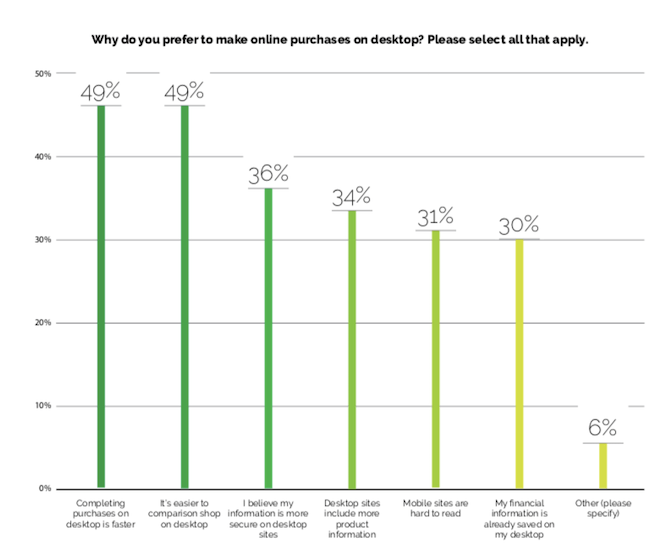
You can see that a lot of it has to do with the convenience of shopping on a bigger screen. But does that mean that mobile apps add no value to the shopping experience?
According to the PYMNTS.com survey, there are very specific features that make retail apps worthwhile:
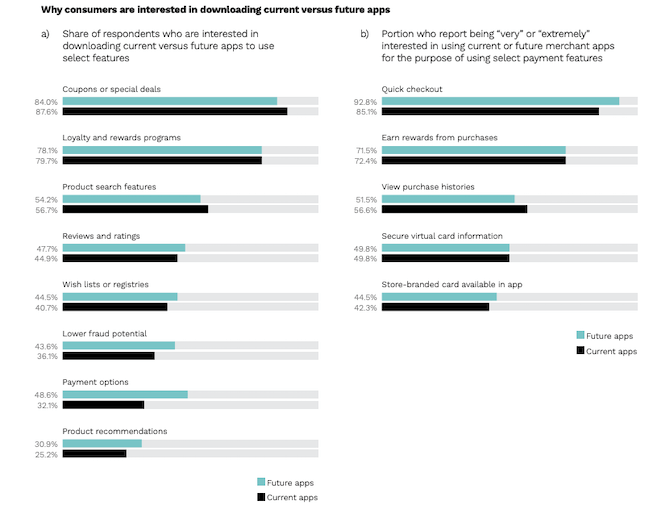
You’ll notice a trend here as consumers want features related to:
- Coupons and other special deals
- Loyalty and rewards programs
- Speedy checkout
- Enhanced product search
- Account history access
So, if you plan on designing an ecommerce mobile app and you want it to play an integral role within the shopping experience, make sure it includes these high-demand features.
Now, users will inevitably go to your website or PWA. But if you want to encourage them to use the mobile app instead of or in conjunction with the site, make sure you clearly explain the incentives behind installing it, as AliExpress does:
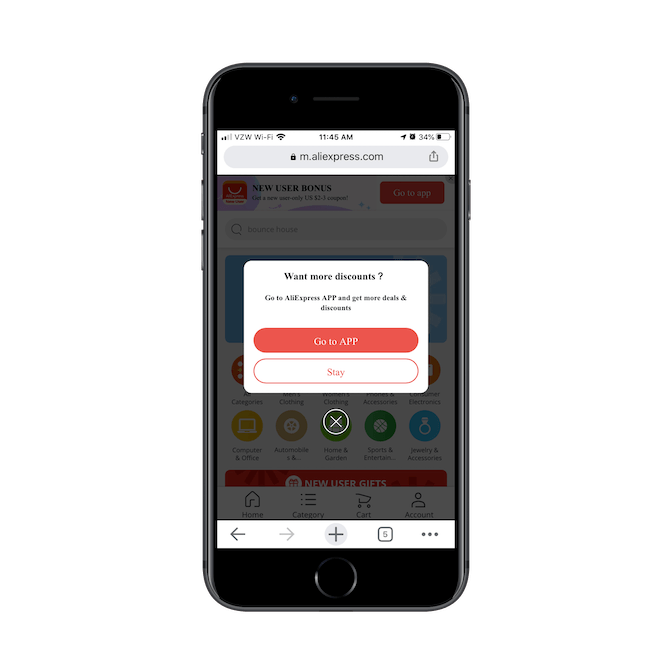
The second someone steps inside the mobile site, they see this message: “Want more discounts?” Knowing what we know from the PYMNTS survey, that’s the perfect way to encourage loyal shoppers to download and use the app as well.
Just make sure the in-app experience delivers on that promise. As you can see here, AliExpress prioritizes the rewards piece in the top-half of the home page:
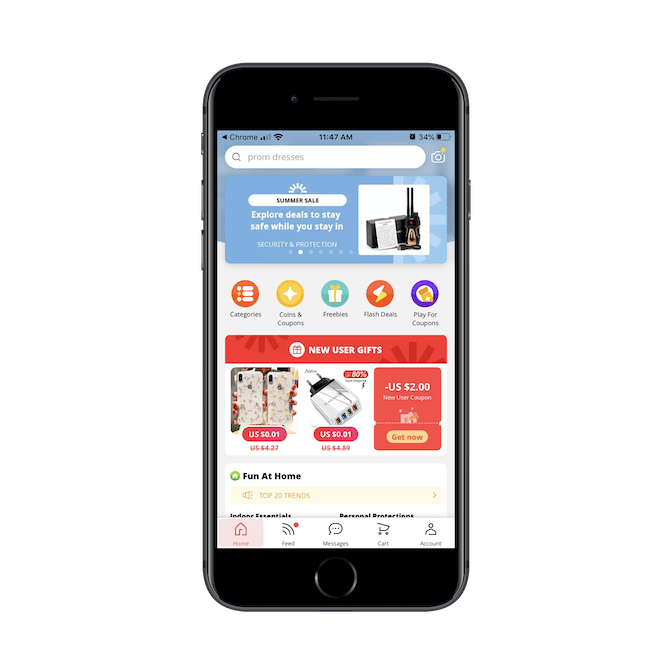
It also encourages app users to sign up for push notifications so they can be the first to know about special offers:

The push piece is especially valuable as it ensures that users interested in flash sales, personalized coupons, and freebies are notified right away and from the device they use most often.
Satisfy In-Store Shoppers
Even with all the devices and platforms consumers have to choose from, many of them still prefer to shop in stores rather than online.
According to Yes Marketing, 90% of shoppers go to the store at least once a month. And that’s because of the unique opportunities it affords them:

Many of the top reasons why shoppers go to brick-and-mortar stores can actually be solved by BOPIS (which I’ll cover in the next point). However, for reasons like trying the product on, getting access to in-store deals, and protecting personal data, those are definitely unique to in-store shopping.
But that doesn’t mean the mobile app can’t serve as their shopping companion while they’re in store. In fact, PYMNTS found that the merchant’s mobile app was the most common thing shoppers use to enhance their in-store shopping experience:
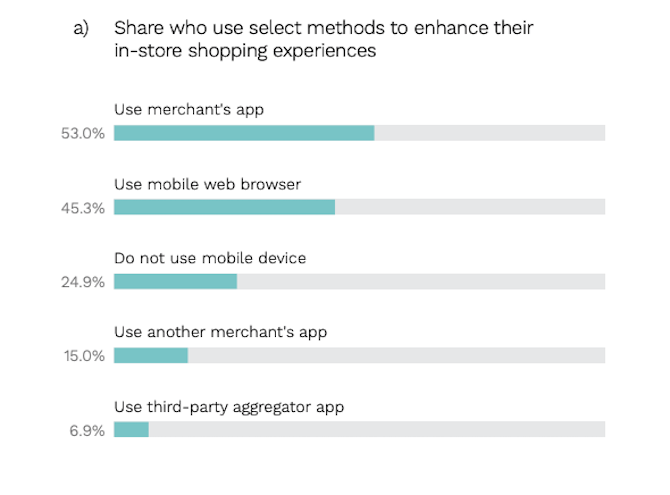
Of all the apps they could choose to use, more shoppers (53%) prefer to use the merchant’s mobile app.
Knowing this, you might decide that it’s best not to build an ecommerce app that allows consumers to shop online. For instance, the Family Dollar app has no ecommerce capabilities. The whole point of the app is to help shoppers find even more bargains through coupon clipping:

Clipping coupons is super easy and they can do it when they’re at home, on the go, or even in the store picking up those exact items. All they have to do is show the barcode to the associate when they checkout and they can instantly redeem their digital coupons:

The app also enables shoppers to scan the barcodes of items when they’re at the store:
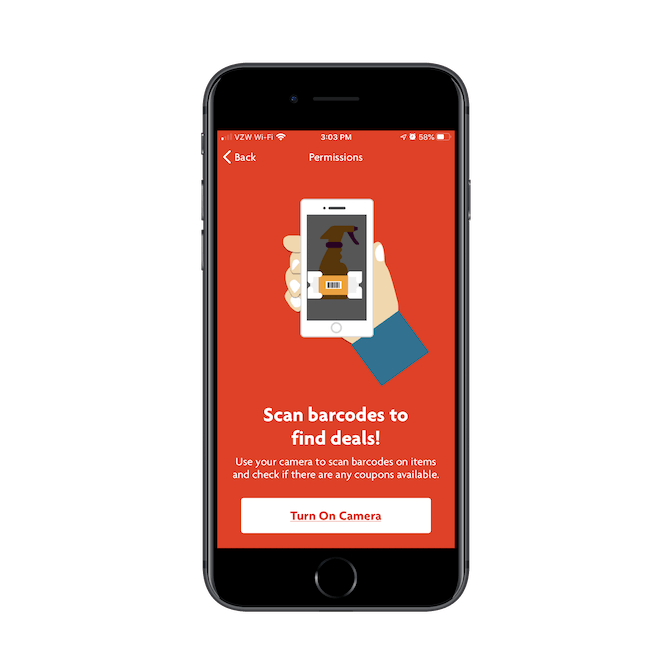
That way, they don’t have to bother with typing out the product name. They simply use their camera to pull in the barcode and let the app do the work to find corresponding deals.
Of course, you can use these kinds of features to enhance an ecommerce app as well. Just make sure they’re evident, so that mobile app users realize they can improve the brick-and-mortar shopping experience as well.
Satisfy BOPIS Shoppers
BOPIS, or buy-online-pickup-in-store, is quickly growing in popularity. And it’s not just because consumers love the speed, convenience, and money saved on shipping that the option affords them. Retailers are benefitting from the trend as well.
In data provided by Doddle, 68% of U.S. shoppers have used BOPIS multiple times. What’s more, 50% of them have decided where to shop based on BOPIS availability.
And get this:
85% of shoppers have bought something else while picking up their BOPIS order in store.
Needless to say, BOPIS should be something that every retailer offers and the mobile app is a useful tool for enabling it.
For one, users can allow the app to detect their physical location and find a nearby store with the desired product in stock. Secondly, users can easily open the app at the store and show it to associates to streamline the pickup of their order.
There are other things you can make a BOPIS mobile app do as well. Let’s look at what Walgreens has done with theirs.
Users can set a preferred store:
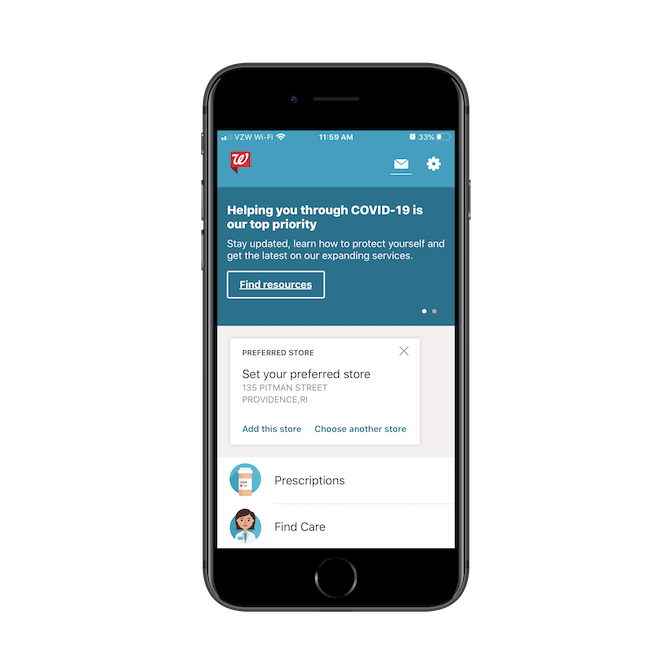
As they shop for products, they can filter results based on:
- All products
- Online products
- In-store products
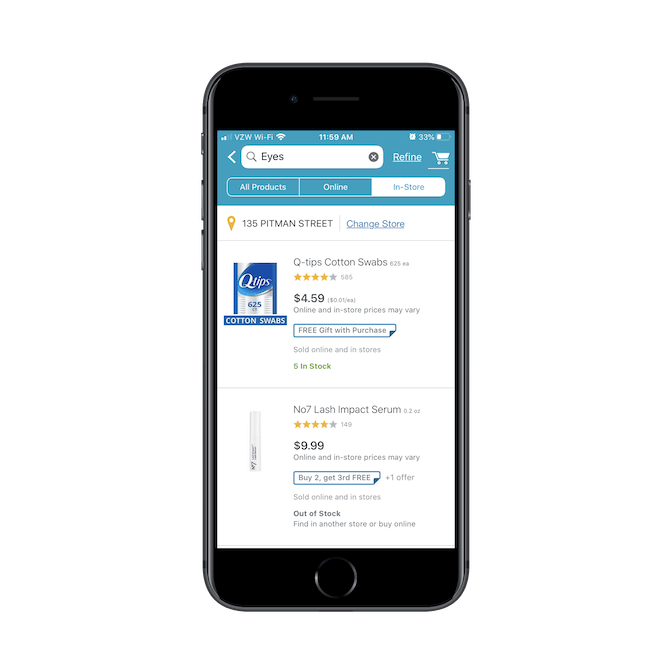
If a user has set a preferred store, the app should provide them information about availability on each product page:
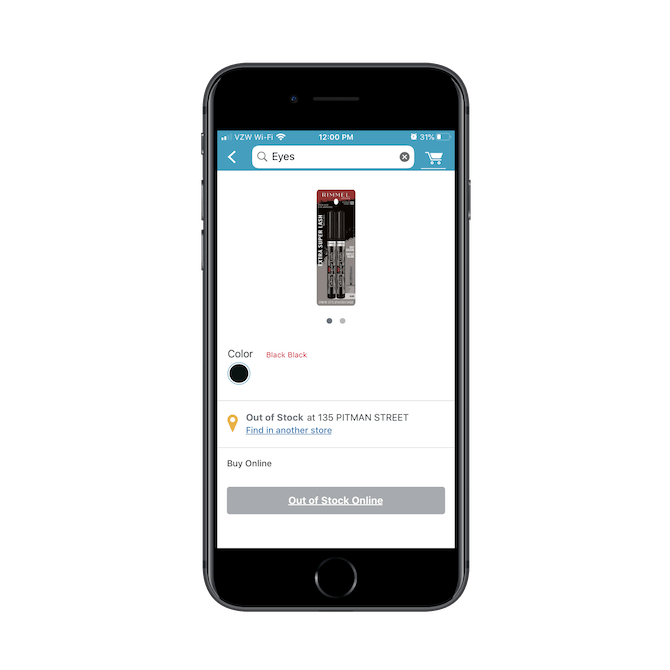
Now, let’s say someone is in a hurry or in a desperate situation and needs to find a specific item. From the search results, they can use a handy swipe feature to find it at a nearby store:
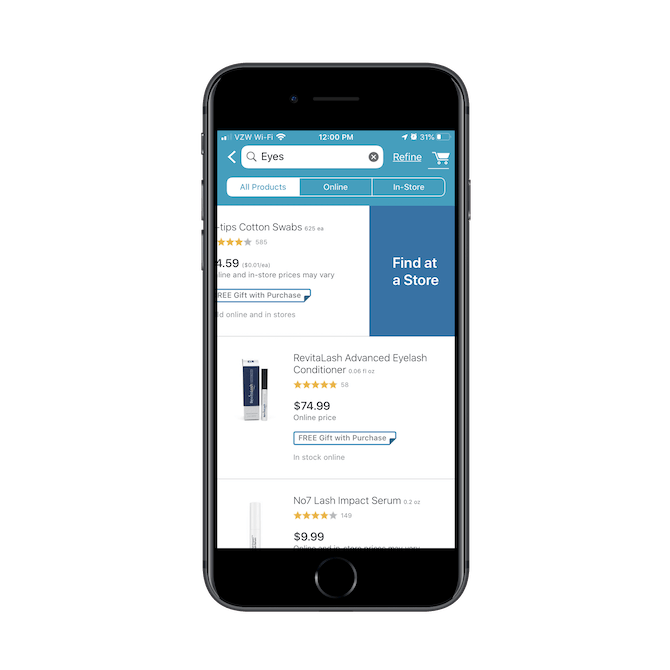
Not only does the map and search results page display nearby locations, but it tells the user exactly how much of the product is left in stock at each store:
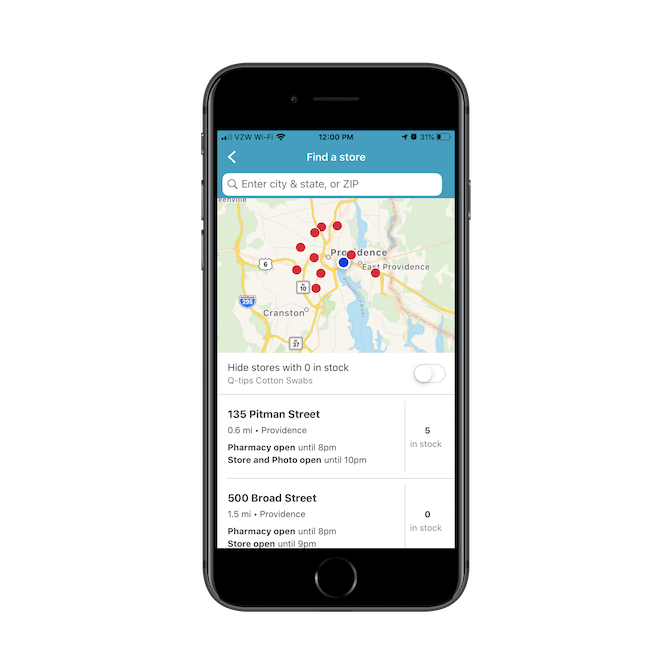
Another neat feature Walgreens has included in its app—which I suspect helps them retain more users—is Bluetooth connectivity:
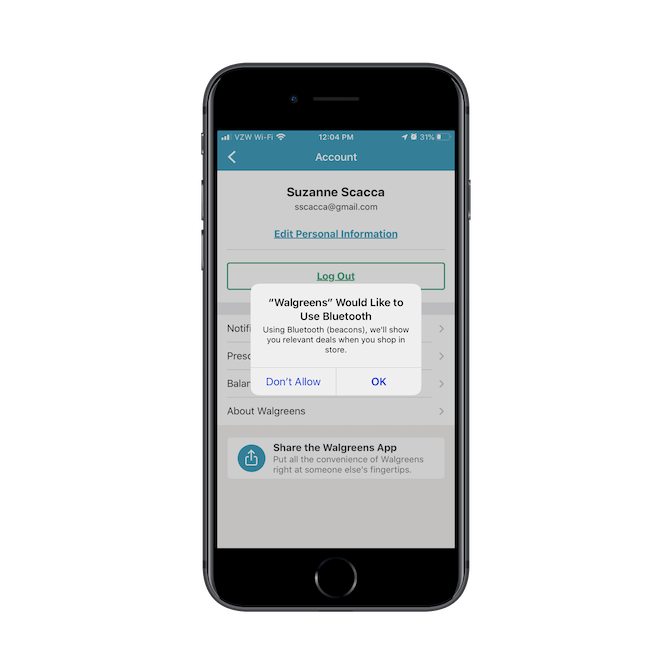
When the Bluetooth beacon is enabled, BOPIS shoppers who like to pick up other things when they go to the store will receive personalized offers while they’re there.
Satisfy Tech-Savvy Shoppers
There are obvious reasons why shoppers spend their money online and why some do so in person. But mobile apps actually enable us to close the gap between the two experiences with smart tech.
We’ve seen one example of this already with barcode scanning. Users are able to leverage their phone’s camera (and their mobile app’s telephony integration) to streamline their in-store shopping experience.
But what else can you do with your mobile app to improve the shopping experience wherever your users are?
One idea is to add a touchless payment option. This is a feature that Sam’s Club has implemented:
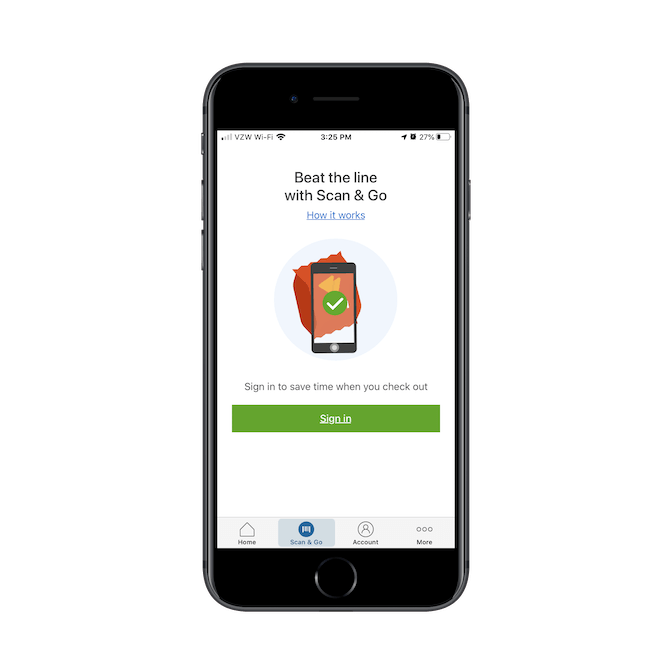
It’s called “Scan & Go” and here’s how it works:
Shoppers scan items before physically placing them into their shopping carts. They can view their total and make adjustments before they’re ready to close out. Once they’ve paid for their items (without any need to go through the checkout line), they simply show their digital receipt to the person at the door.
Considering the kinds of changes made due to COVID-19, I expect this is something more retail and hospitality apps will need to adopt. Even before the pandemic, PYMNTS found that it was a great motivator for consumers with 45.9% willing to download a merchant app if they could use it to bypass checkout.
AR is something else that consumers find valuable. For ecommerce, specifically, you could use it to help shoppers who don’t want to go to the store to try stuff on. Not only will this lead to more confident sales, but also fewer refunded or exchanged items.
This is something Ulta Beauty offers. It’s called GLAMlab Live Try-On:
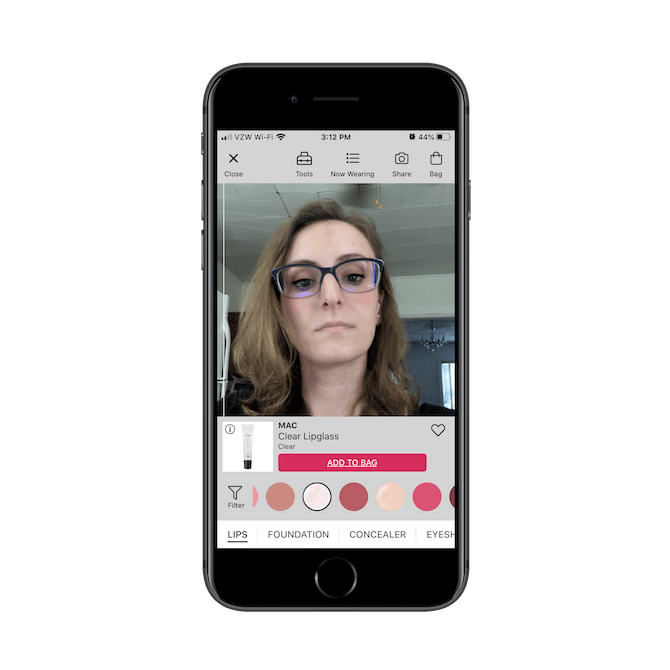
This feature enables customers to try on different kinds of makeup. Once they’ve found the winning combination, they can open the “Now Wearing” list and view the products:

All they have to do then is click “Add to Bag” to put those perfect-fit items into their shopping cart and check out.
Think about how much more money an ecommerce company could make by selling the right items to customers the first time around rather than having to constantly process returns or exchanges for them. If that’s a pain point for your client (or one they’re worried about), AR could solve that.
Wrap-Up
Clearly, ecommerce apps have a vital role to play in the omnichannel shopping experience for customers. Whether they’re to be used as the primary shopping channel or to enhance the experience through another, the mobile app is a multi-talented tool that retailers and ecommerce companies alike can’t afford to be without.

Suzanne Scacca
A former project manager and web design agency manager, Suzanne Scacca now writes about the changing landscape of design, development and software.

